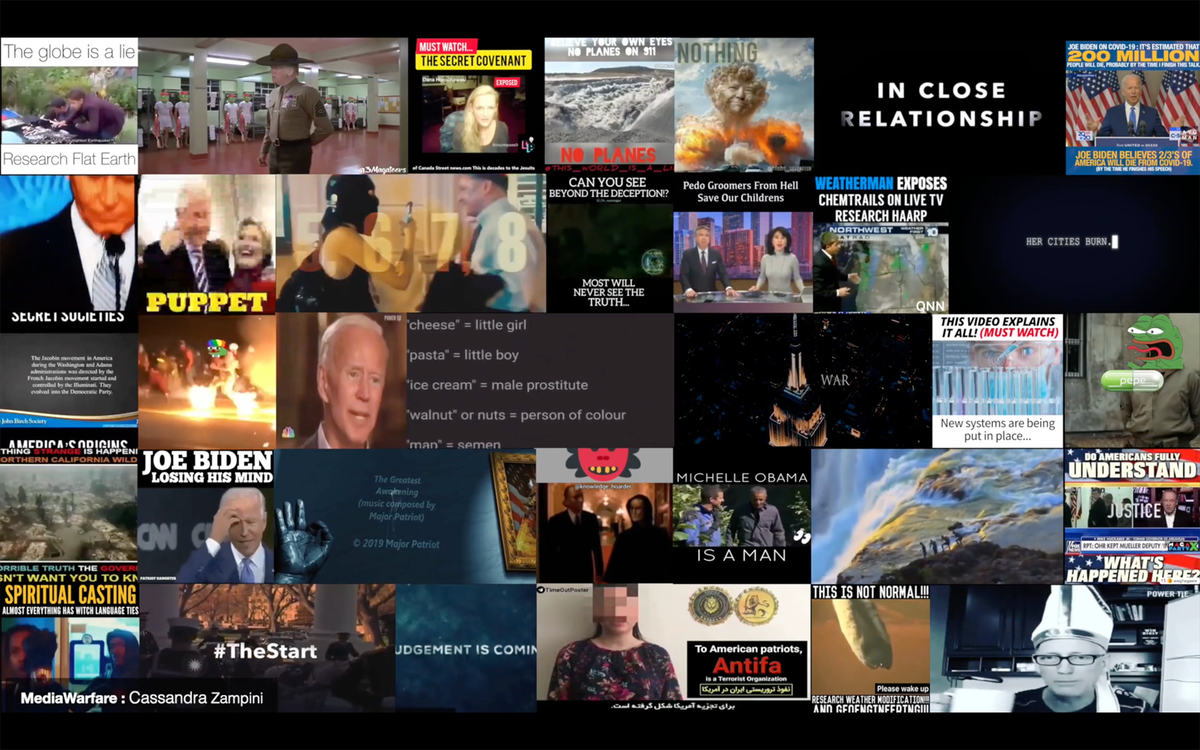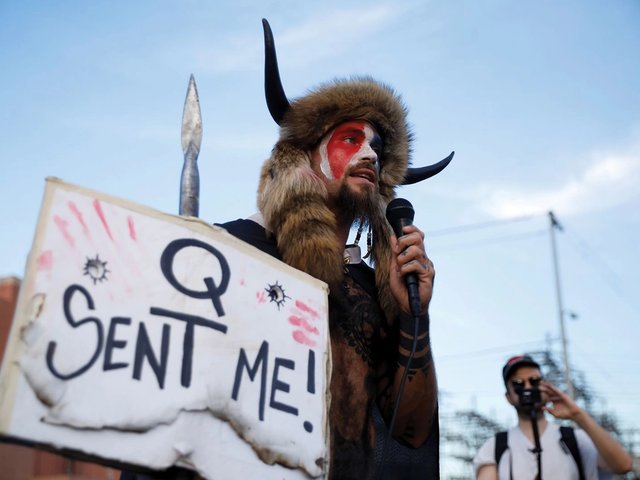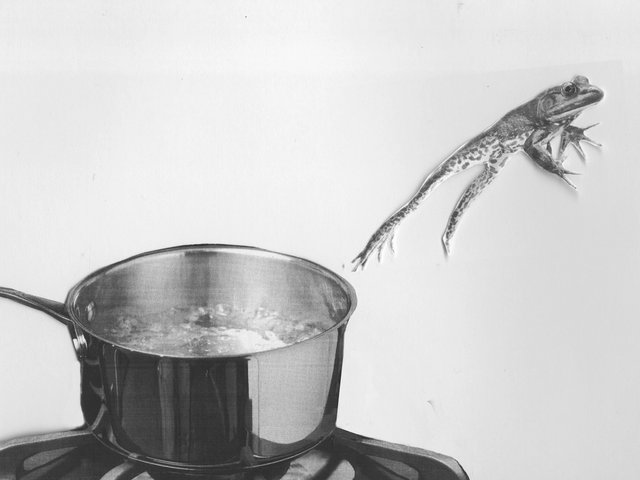The promulgation of conspiracy theories has reached a fever pitch in the US as Trump rattles off misinformation on his power platform, Twitter, about alleged voter fraud in a bid to hold onto the White House following the election of Joe Biden by the American people. This dangerous conspiratorial political climate provides an apt cultural backdrop for Cassandra Zampini’s latest work addressing the spread of fake news on social media and how it can influence our worldview, relationships and opinions.
The New York-based artist downloaded and compiled hours of conspiracy theory videos from fringe corners of the internet for the work Media Warfare (2020), resulting in a short film that, like the news it draws from, is overstimulating and anxiety inducing. The mosaic of clips that fill the frame are sourced from several disconcerting hashtags including #SecondCivilWar and #GreatAwakening.
“I had to watch some disturbing things—things like #PizzaGate and all the child pedophilia conspiracy theories were definitely the most upsetting—but these clips feel like a moment in time,” Zampini says, referencing a debunked theory that went viral during the 2016 US presidential election cycle that targeted Democrats and was fuelled by the then little-known far-right QAnon group. “Most would be quickly censored but then pop up somewhere else.”
As one clip disappears from the screen, it is replaced by another often similar video, with their original audio weaved in throughout the harrowing 25-minute the work that reflects an exhausting and fractured American psyche.
“Showing these clips as an aggregate was important,” the artist says. “People might see a video or two here and there but seeing them together shows how dark they can be and how numerous they are as well", spreading far beyond the US.
Indeed, even as many made-in-the-USA conspiracy theories are struggling amid election fallout post-election, they are finding roots with alt-right groups globally. This week the Washington Post reported that QAnon followers in Australia and New Zealand shared a fabricated a story on Telegram about Democrats deliberately infecting tens of thousands of senior citizens with Covid-19 while, in Canada, false claims abound that Prime Minister Justin Trudeau plans “immediate military intervention on American soil” if Trump does not concede the election.
As dark as some conspiracy theories surrounding the election are, Zampini also includes some “less disturbing and more comical” conspiracies like #FlatEarthers, and some of the “cursed images” often recycled online, like unflattering images of celebrities, emphasising the “bombardment of information repeated on social media”, she says.
Media Warfare is, appropriately, available to watch for free on Vimeo just like the many of the videos it draws from. The work follows a project titled Data Replay (2016) in which Zampini explored the relentless outpour of information online and how images can influence us. For the work, the artist downloaded more than 10 million selfies and video clips and aggregated them into a large-scale piece.
“I started that work during the 2016 election and then went down a road of discovery—I think conspiracy theories were a natural progression,” Zampini says. “I felt compelled to finish my most recent piece before the election because to highlight this growing and disturbing issue.”




